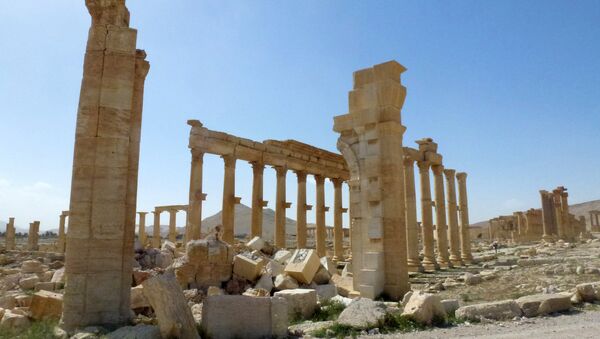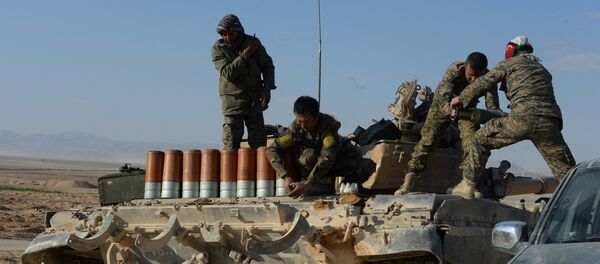Sabbah Zanganeh, political analyst and Iranian envoy to the Organization of Islamic Cooperation, told Sputnik Persian that when Daesh and Jabhat Fatah al Sham (previously known as the Nusra Front) terrorists face the threat of annihilation in one region they seek to redeploy their forces to another.
Therefore, he explained, after the city of Mosul in Iraq was cut off and a significant part of Aleppo province was liberated by the government forces, the terrorists decided to try their luck at Palmyra; however, the maneuver would have been impossible without the consent and assistance of their sponsors.
"Obviously it would’ve been impossible without the help of their sponsors from countries like Turkey, Saudi Arabia, Qatar and the United States. Such a large number of militants (over four thousand) simply couldn’t have slipped from Mosul to Syria undetected by US military aircraft. Clearly, by halting its operation in the vicinity of Raqqa the US-led international coalition allowed the militants to prepare to move their forces from Mosul to Syria. This entire operation was conducted in accord with the United States and certain powers in the region," Zanganeh surmised.
Meanwhile, French journalist and Middle Eastern affairs expert Richard Labévière declared that Daesh’s attack against Palmyra is clearly related to the liberation of Aleppo by the Syrian army, and that this operation conducted by the terrorist group is a blow to the US, Israeli, European and Persian Gulf States’ diplomacy.
"The European coalition insisted on keeping part of Aleppo under the control of the ‘moderate’ (according to them) opposition, namely Jabhat al-Nusra, the al-Qaeda affiliate in Syria, in order to impose their country partition plan worked out during the talks in Geneva led by Staffan de Mistura," he said.
He further pointed out that Daesh troop buildup near Palmyra was made possible in no small part due to steadily functioning supply lines from Raqqa.
"There’s logistical segmentation regarding the supply of weapons, munitions and troops between the Daesh command hubs in Mosul and Raqqa, and the regions where Daesh forces operate – for example, the region to the east of Deir ez Zor, or for the area around Palmyra which was never completely liberated from those Daesh groups that were a priority target for the US and the aforementioned international coalition formed by the US over two years ago in August 2014," the analyst explained.



